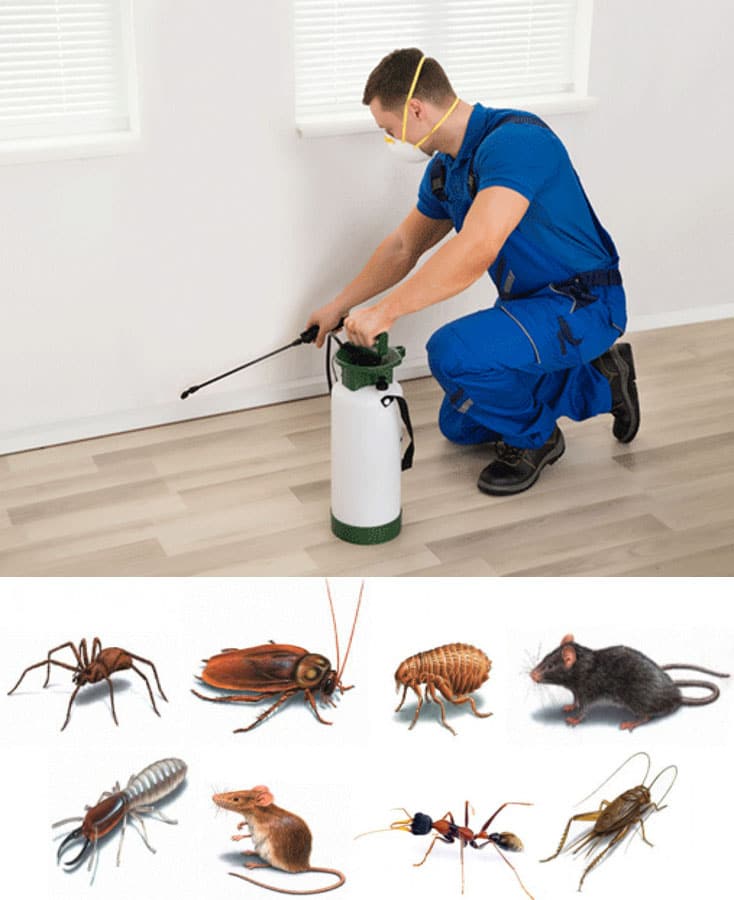The Basics of Pest Control
Identify pests to be sure the control method you choose will work. Remove sources of food, water and shelter. Clutter provides breeding sites and hiding places for many pests. Praying mantises, lacewings and ground beetles are natural predators of many pests.
Choose a pest control company that will inspect your property before giving you an estimate. Ask about their procedures to reduce your exposure to pesticides, including low-toxicity options and avoiding unnecessary applications. Contact Killian Pest Control now!

Pests can cause a number of health problems and can also result in costly repairs, food waste, or product recalls. It is important for food plants to use preventive control methods in order to avoid these issues. Preventive pest management includes monitoring for the presence of pests, detecting early signs of infestation and taking action to minimize damage before it occurs.
The most important component of prevention is sanitation. Practicing strict cleanliness standards will remove the food, water and shelter that draws pests to a building. Regular garbage removal and proper storage of food in sealed containers will also deter many pests. In addition, a regular maintenance program to seal gaps and cracks can reduce the chance of pest entry and keep moisture out (which is a major attraction for many pests).
Proper ventilation can also be important in keeping pest populations down. Frequently cleaning vents, ducting and eaves will help eliminate the harborage areas where many pests lay eggs. Using fly screens on doors and windows can also be a very effective method of deterring most pests, especially flying insects. Keeping windows and vents closed when not in use will also help to keep pests out.
Another important aspect of prevention is knowing a pest’s life cycle. Understanding the typical lifespan of a pest, its growth stages, and whether it has winged forms will assist in determining when and how to take action. It is also necessary to recognize signs of pest activity such as droppings, egg masses, or webs, so that pest control measures can be taken at the earliest possible time.
It is also beneficial to have a pest identification guide that lists common pests and their preferred habitats. This can be particularly helpful for new food plant employees who may not be familiar with the pests in a specific region. Finally, utilizing natural predators and parasitic organisms can be an effective way to keep pest populations under control.
Occasionally, expert pest control services are needed to manage severe or enduring infestations. However, the best approach is always prevention.
Suppression
The goal of pest control is to reduce a pest population to an acceptable level, without causing excessive harm to non-target organisms. This is sometimes achieved by using natural enemies, such as parasitoids, predators or pathogens. It can also be done through chemical controls, such as pheromones or juvenile hormones.
Some pests can cause economic damage, such as by eating crops or damaging structures. Others can be a nuisance, causing itching or biting. Others are simply unsightly, such as pine seed bugs or earwigs. Still others are a health concern, such as rodents or cockroaches. They may carry and spread diseases, or they can cause allergies and sensitivities, such as to stinging insects like bees, wasps or house centipedes.
In some situations, the threshold for unacceptable pest numbers or damage is zero, as in operating rooms and other sterile areas of health care facilities. In these cases, routine pest control strategies are needed to prevent and control the spread of disease-causing organisms.
Pests can only thrive in an environment where food, water and shelter are available. For example, nematodes are tiny worms that live in soil and water but have a negative impact on plant growth because they dig holes into leaves and petals. They can then make the plants more vulnerable to disease, which can further escalate the damage. This is why a good pest maintenance program starts with understanding the needs of the specific pest populations under management.
Cultural controls are used to disrupt the pests’ environment and limit their movement. These include plowing, crop rotation, cleaning tillage equipment and greenhouses, and managing irrigation schedules to avoid long periods of high relative humidity.
Some cultural controls can be applied to a whole landscape to disrupt the interaction between different pests. For example, a fungus that affects all members of its own species can be controlled by removing the fungus from the habitat of the other species, such as by spraying it with a fungicide. This type of broad-spectrum control is more effective than applying fungicides to individual pests. It is also safer for the environment and humans, as it minimizes the amount of chemicals that are absorbed into the groundwater supply.
Detection
Pests can cause costly structural damage, and early detection of their presence can save homeowners from expensive restoration projects. Trained professionals carefully scan structures for the slightest sign of pest activity, such as chewed wires that suggest rodents or a change in the color of wood that indicates termite infestation.
Several technologies help detect pests in their earliest stages, including radar-based insect tracking systems that can monitor the movements of pests. Other technology uses light and thermal sensors to measure how much a surface reflects or absorbs certain wavelengths of light, known as its spectral signature. By comparing a surface’s spectral signature with a database of known pests, these sensors can identify the presence of unwanted organisms.
Some pests pose health risks for humans by transmitting diseases. Rodents, mosquitoes, ticks, and other vectors carry disease-causing microorganisms that can cause leprosy, skin infections, urinary tract infections, intestinal problems, and more. Pest control strategies can reduce the likelihood of such outbreaks by removing hosts and eradicating disease-causing pathogens.
Biological control methods that encourage natural enemies of pests can also minimize the risk of pest outbreaks. These include crop rotation, soil amendments, nutrient management, and interplanting to discourage pests from finding food or shelter. Physical controls, such as traps, screens, barriers, radiation, and alterations to the environment, can also be used to prevent pests from invading crops and homes.
Using satellite imagery and other advanced technology, pest hotspots can be identified, allowing farmers to focus their pest control efforts in the areas most at risk of an outbreak. Other technologies, like pheromone traps that use cameras to photograph trapped insects, can also help predict how fast a pest population will increase and alert field technicians when an outbreak is imminent. With 24/7 monitoring backed by real-time notifications, these technologies can be extremely useful in preventing outbreaks and saving homeowners from extensive pest control costs.
Eradication
Unlike suppression, which seeks to cause damage below an unacceptable level, eradication attempts to destroy a pest population completely. Eradication can only be accomplished if the circumstances surrounding the infestation allow for such an action to be taken.
In order to determine the feasibility of an eradication programme, information on the origin of the pest, its biology and potential economic impact, and current technology and resources should be evaluated. A preliminary investigation should also include the assessment of pathways by which the pest could re-enter and spread, which can be determined through a PRA (see ISPM 2 for more information).
The decision to initiate an eradication programme should be based on a thorough evaluation of the circumstances in which the pest was detected or occurrence, its identification, the risk identified through a PRA and estimated present and potential distribution. An estimate of the time needed to conduct an eradication programme is also important.
Once an eradication programme has been completed, its success must be verified. This can be done by examining the area to see if the pest is still present or by testing products and commodities to ensure that the specific organism has not been introduced into commercial trade. If the verification is successful, the NPPO can declare the pest eradicated.
It should be remembered that overuse of pesticides can cause the development of resistant insects, which may make eradication programmes more difficult. In such cases, the use of integrated pest management techniques is recommended.
Pesticides can also kill beneficial insects that assist in natural control of pests, and they can enter the environment through rain or runoff water causing unintended consequences. When such incidents occur, it is essential to examine what went wrong, and the causes of pesticide failure should be corrected.
The word eradicate has the same root as extirpate, which means “to uproot or drive out.” Although it began life as a literal uprooting of an undesirable plant such as a weed, the modern meaning of the word is more often applied to the elimination of a human enemy.






